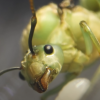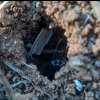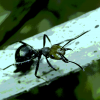I'm sorry. I mis ID'd. The queen you have is smaller than Apiculatum which means she's most likely Luctosum. To my knowledge Luctosum IS NOT polygynous.
Ok, thanks for the info! ![]()
Edited by antsriondel, November 29 2022 - 7:01 PM.
I'm sorry. I mis ID'd. The queen you have is smaller than Apiculatum which means she's most likely Luctosum. To my knowledge Luctosum IS NOT polygynous.
Ok, thanks for the info! ![]()
Edited by antsriondel, November 29 2022 - 7:01 PM.
 |
Ant Keeping →
Ant Keeping Journals →
AntsCzech's general journalStarted by AntsCzech , Oct 18 2025 |
|

|
|
Ant Keeping →
General Ant Keeping →
DeforestationStarted by Idontexist , Oct 1 2025 |
|

|
||
Ant Keeping →
Ant Keeping Journals →
Entomologyants's Dark Rover Ant Journal!Started by Entomologyants , Sep 18 2025 |
|

|
||
Ant Keeping →
Ant Keeping Journals →
Antz_Straya's Australian AntsStarted by Antz_Straya , Sep 7 2025 |
|

|
||
Ant Keeping →
General Ant Keeping →
Ant Colonies for Sale, Tetramorium, Lasius, ManicaStarted by Stubyvast , Jul 23 2025 |
|

|
0 members, 0 guests, 0 anonymous users